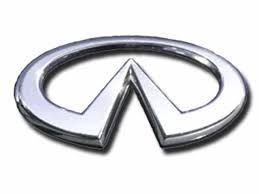J30 V6-2960cc 3.0L DOHC (VG30DE) (1995)
/Page-1945004.png)
3. Buff and evaluate.
If OK Buff and then polish all affected areas.
If NG go to step 4.
Also determine film thickness removed.
4. Wet sand and evaluate.
If OK wet sand then buff and polish affected surfaces.
If NG go to step 5.
Also determine film thickness removed.
5.
Re-clear/color coat after neutralizing surfaces.
6.
Apply color coat and clear coat if damage is completely through clear coat.
NOTE:
Polishing to remove buffing or swirl marks requires a foam finishing pad on a dual action sander. Use of a wool pad for final polishing on vehicles
with a Fluorine clear coat is not recommended.
3M materials:
Meguiar's materials:
3M and Meguiar's materials are available at local automotive paint and body supply stores.
Misc: 8" buffer (1500-1750 RPM)
Dual action sander, variable speed
Terry cloth towels (100% cotton)
NOTE:
Always use separate pads for each liquid (mark the backside of each pad with the type of liquid used) and clean the pads frequently. Use of a wool
pad on clear coat is limited to the polishing type of pad and is always followed by a foam pad on a dual action sander to remove swirl marks.
Measuring Paint Film Thickness
Before any abrasive removal, measure the initial film thickness at several places to establish an average figure. After each abrasive step measure several
places again to determine how much paint film was removed. Follow the instructions provided by the manufacturer of the mil gauge you are using for
measurement and calibration. If you do not have a thickness gauge use the following rule of thumb during abrasive removal; When the "orange peel"
surface is removed, 0.5 mil has been removed.
Polishing
Polishing is done in two steps: The first step is with an 8" buffer and the second step with a dual action sander to remove buffing and swirl marks. Low
speed (1500-1750 RPM) is necessary to prevent over-heating the surface.
CAUTION:
Do not polish or buff a surface dry. More than the usual quantity of liquid must be used to keep the paint surface cool. Wipe the excess material off
with a clean soft towel after each operation.
1.
Clean the surface of all residue before polishing.
2.
Use an 8" buffer (at 1500-1750 RPM) with either a 3M wool polishing pad or a Meguiar's foam pad, apply polishing compound over the work
